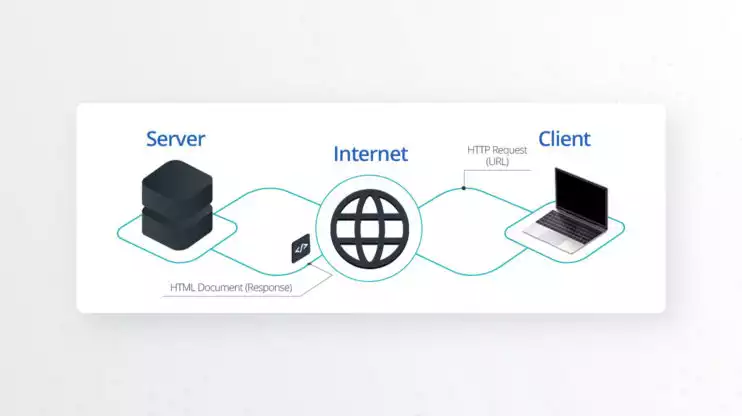What is a web server?
A web server is a computer with software designed to receive requests via HTTP (Hypertext Transfer Protocol) and other protocols, process them, and deliver the requested data stored in the database (text, image, video, etc.) over the internet. The requests are mediated by a web browser, such as Google Chrome or Mozilla Firefox or by a web client, such as an Android or iOS desktop app. Web servers have both hardware and software parts. A resource-heavy website may require a number of web servers working together to deliver data within optimal timeframes.

What does a web server do?
The main role of a web server is to allow smooth access to data upon request from other HTTP clients. Data can be both static (HTML documents, images, other files) and dynamic (generated via an application). Web servers basically act as intermediaries between the user and the physical server. So if you want to build a website or a web application, you will need to have it “live” on a server. Web servers are also used to authenticate users, log files, and send/receive emails. Since web servers are such a big and important part of the “fabric” of the internet, you want to make sure you choose secure and fast ones for your website. The website code runs on a web server, so even if you’ve got a fast reliable application, but a misconfigured web server, your clients will have trouble.
WordPress compatibility
Since WordPress powers such a big portion of the internet, it is compatible with all major web servers. However, your particular choice of a web server will depend on your website’s needs, your server configuration skills, as well as your hosting provider. For example, if you’re gonna mostly serve static content, Nginx might be a good choice: It’s super reliable, open source, secure, and free. Bear in mind that if you’re not going to configure and manage a server on your own, going with WP-specific managed hosting will save you a lot of hassle going forward.
Architecture overview of a web server
There is a lot that goes into a website that loads in a second, and web server architecture is a major part of it. The factors that affect web server choice include:
- The physical properties of the server, such as memory, storage space, and computing speed
- Performance (depends on network latency, data throughput, etc.)
- Supported platforms (PHP, Node.js, .Net, etc.)
- Operating system (Linux, Windows, etc.)
- Network connectivity (Modes of connection, users supported, etc.)
- Types of applications deployed
All of these make up the web server architecture and should be considered when making a choice.
Which is the most popular web server application?
Nginx and Apache are the absolute leaders in the web servers’ field by usage stats, followed by LiteSpeed. But this doesn’t mean that there isn’t room for other options. Here are the recent usage stats of the most popular web servers.
| Apache | Nginx | |
| Connections handled | A bunch of multi-processing modules (MPMs) dictate how client requests are handled. This makes Apache’s resource consumption pretty high. | Uses an asynchronous, non-blocking, event-driven connection handling algorithm. This makes Nginx able to scale even with very limited resources. |
| Dynamic Webpages | Can handle them. | Can’t handle them natively. |
| Configuration Settings | Distributed: Can allow non-admin users access to certain directories. | Centralized: Doesn’t allow select access. |
| Modules | Dynamically loadable | Have to be selected and compiled into the core |



